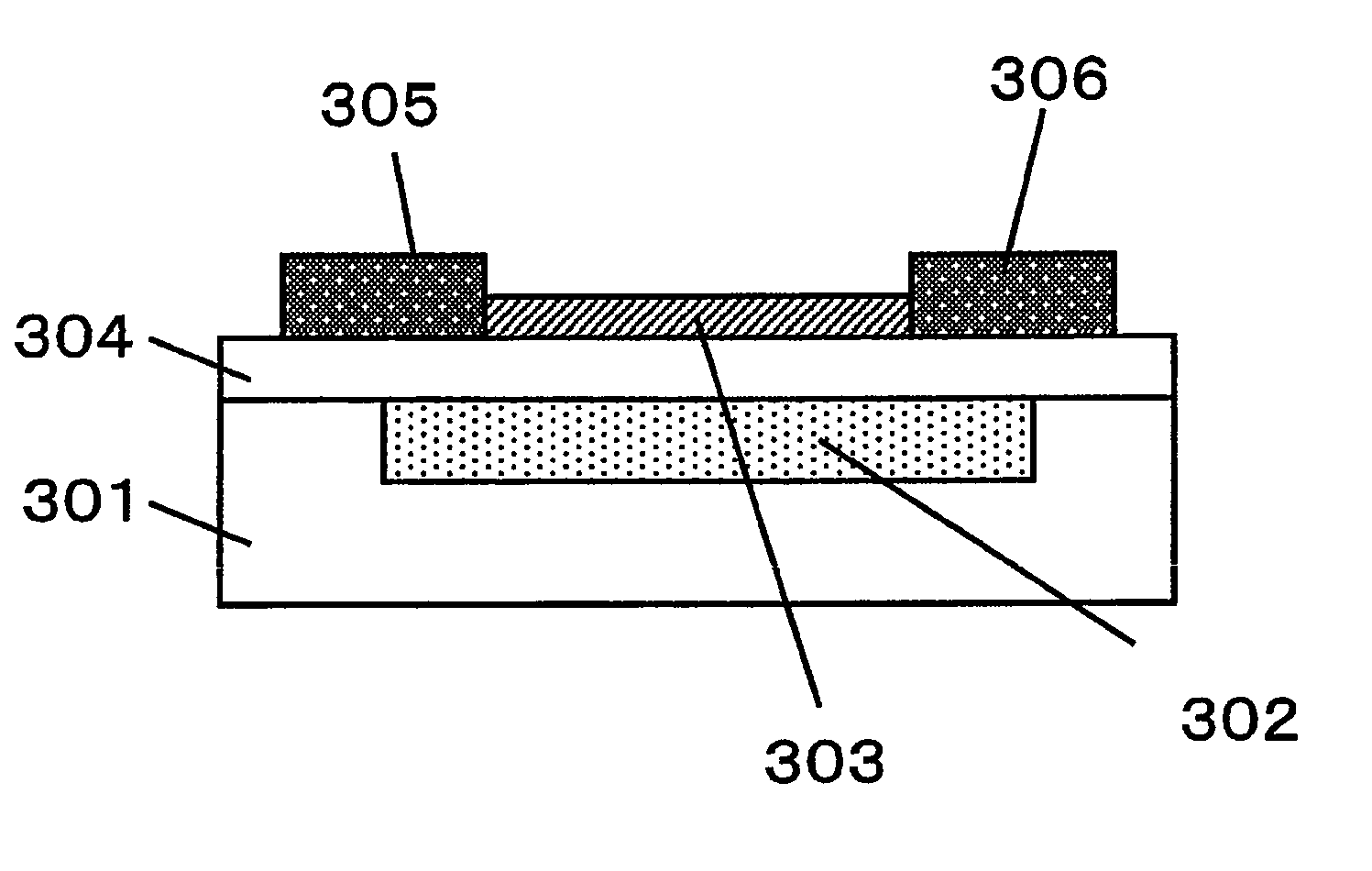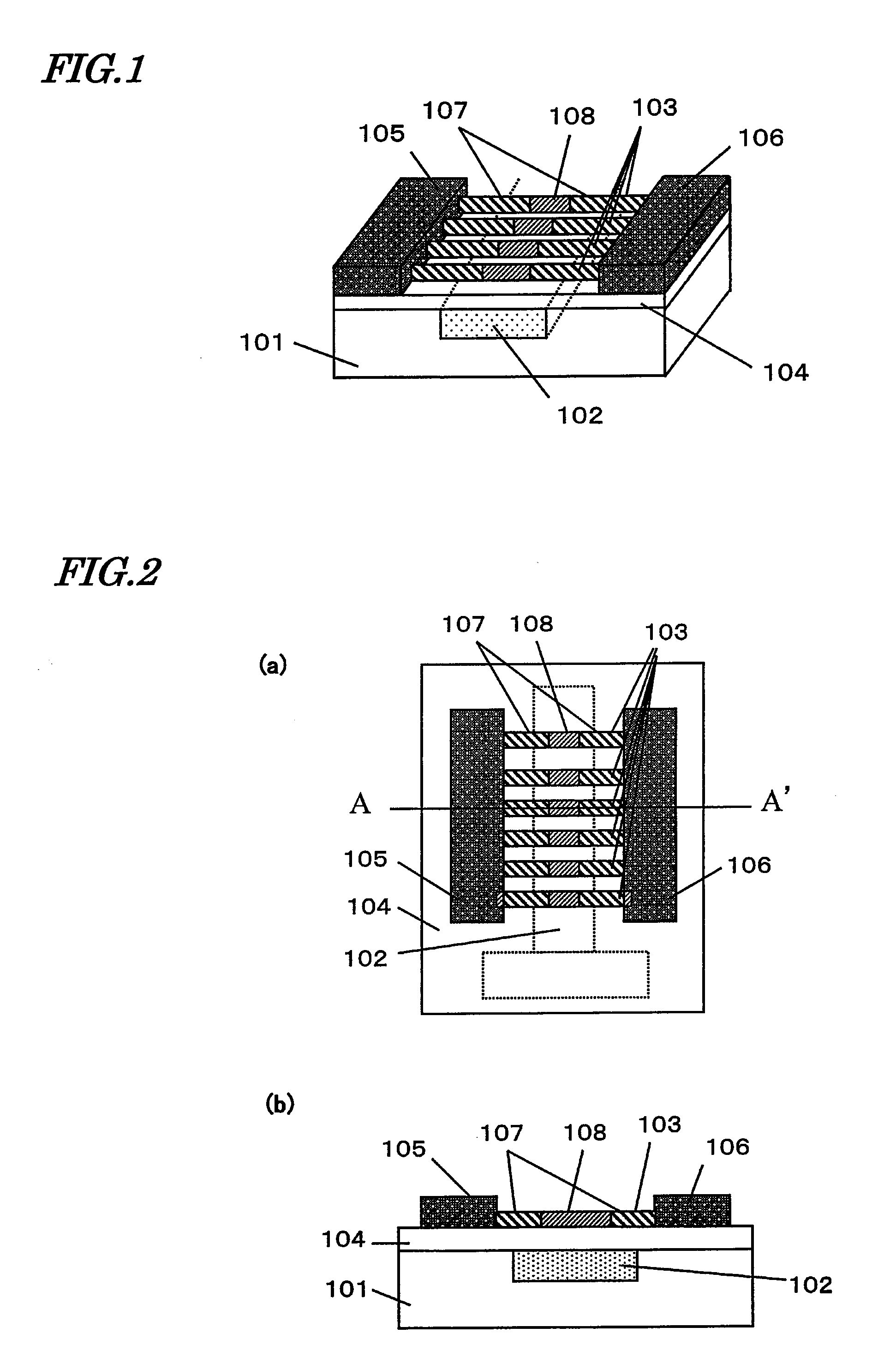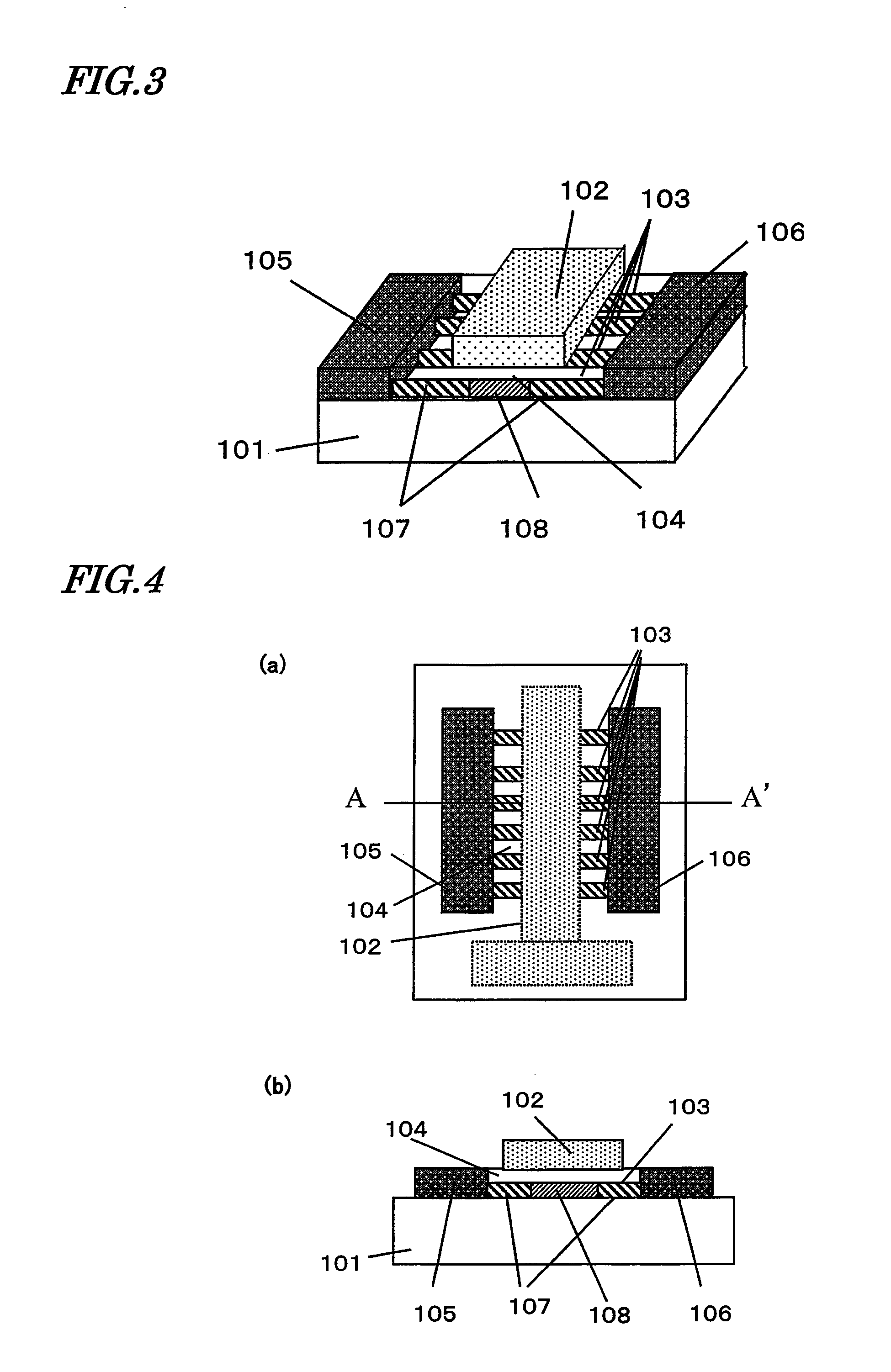Field effect transistor
a field-effect transistor and transistor technology, applied in the field of field-effect transistors, can solve the problems of inability to adapt to printing processes, increase production costs, and use of such conventional processing techniques, and achieve the effects of reducing the contact resistance between the source electrode and the drain electrode, reducing the resistance of the channel due to offset, and reducing the variation
- Summary
- Abstract
- Description
- Claims
- Application Information
AI Technical Summary
Benefits of technology
Problems solved by technology
Method used
Image
Examples
Embodiment Construction
[0080]Hereinafter, with reference to the drawings, the construction of a transistor structure according to the present invention will be described. FIG. 1 shows an exemplary perspective view of a bottom-gate type transistor structure according to the present invention. FIGS. 2(a) and (b) are, respectively, an upper plan view and a cross-sectional view taken along line A-A′ of the transistor shown in FIG. 1. FIG. 3 shows an exemplary perspective view of a top-gate type transistor structure according to the present invention. FIGS. 4(a) and (b) are, respectively, an upper plan view and a cross-sectional view taken along line A-A′ of the transistor shown in FIG. 3.
[0081]It is constructed on a substrate 101, from semiconductor nanostructures 103 each having a channel layer in at least a portion thereof, a source electrode 105 and a drain electrode 106 connected to the semiconductor nanostructures 103, an insulating film 104 adjoining the semiconductor nanostructures 103 and functioning ...
PUM
 Login to View More
Login to View More Abstract
Description
Claims
Application Information
 Login to View More
Login to View More - R&D
- Intellectual Property
- Life Sciences
- Materials
- Tech Scout
- Unparalleled Data Quality
- Higher Quality Content
- 60% Fewer Hallucinations
Browse by: Latest US Patents, China's latest patents, Technical Efficacy Thesaurus, Application Domain, Technology Topic, Popular Technical Reports.
© 2025 PatSnap. All rights reserved.Legal|Privacy policy|Modern Slavery Act Transparency Statement|Sitemap|About US| Contact US: help@patsnap.com



